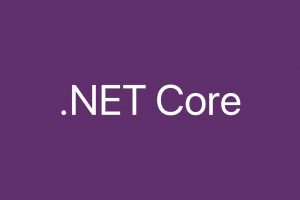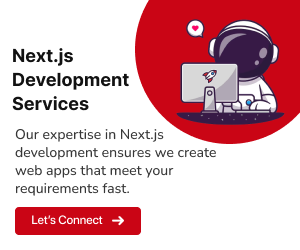If you’re eager to dive into web development, React is a fantastic place to start. This JavaScript library has taken the front-end world by storm, and learning it from the ground up is an excellent way to build your skills. In this blog, we’ll explore the basics and how to learn React from scratch.
What is React?
React, developed by Facebook, is an open-source JavaScript library for building user interfaces. It’s known for its declarative and component-based approach, making it a popular choice for web and mobile app development. React allows you to create interactive, efficient, and reusable UI components.
Advantages of React
Before we delve into learning React, let’s understand why it’s worth your time. Here are five key advantages of React
Component-Based:
React’s component-based architecture encourages the creation of modular, reusable UI elements, which can save you time and effort in the long run.Virtual DOM:
React uses a virtual DOM to efficiently update and render changes, leading to improved performance and a smoother user experience.Large Ecosystem:
React has a vast ecosystem of libraries and tools, including state management options like Redux and MobX, making it suitable for a wide range of projects.Strong Community:
The React community is active and supportive, with a wealth of online resources, tutorials, and forums to help you learn and troubleshoot.Cross-Platform Development:
With libraries like React Native, you can use your React skills to develop both web and mobile applications, saving you time and effort.
Prerequisites to Learn React
Before you dive into learning React, it’s helpful to have a foundation in the following
HTML and CSS:
Understanding the basics of HTML and CSS is essential for web development with React, as you’ll be working with these languages to build user interfaces.JavaScript:
A solid understanding of JavaScript is crucial since React is a JavaScript library. You should be comfortable with concepts like variables, functions, and objects.Node.js and npm:
Node.js and npm (Node Package Manager) are essential for managing React projects and dependencies. Install these tools on your machine before you begin.
Related: Top 12 JavaScript Concepts to Know Before Learning React
Steps to Learn React From Scratch
Now that you’ve got the prerequisites covered, let’s break down the steps to learn React from scratch
1. Set Up Your Development Environment
a. Install Node.js and npm
Node.js is a JavaScript runtime environment that allows you to run JavaScript on the server-side, and npm (Node Package Manager) is a package manager for JavaScript. You can download and install Node.js from the official website, and npm will be included.
b. Choose a Code Editor
Select a code editor that you are comfortable with for writing your React code. Visual Studio Code (VSCode) is a popular choice due to its extensive features and React-specific extensions.
c. Create a New Directory
Before creating your React project, organize your workspace by creating a new directory for your project. This directory will house your React application’s files.
2. Create Your First React App
a. Use “Create React App”
React offers a tool called “Create React App” that streamlines the setup of a new React project. You can create a new React app by running the following command
npx create-react-app my-react-appThis command creates a new React project named my-react-app. Replace my-react-app with the name you prefer for your project.
b. Navigate to Your Project Folder
After the project is created, navigate to the project folder using the cd command
cd my-react-appYou are now inside the project directory, ready to start working with React.
3. Understand React Components
a. React Components
React is built around the concept of components. Components are the building blocks of React applications. They are reusable and self-contained units of UI. Learning how to create and manage components is a fundamental step in mastering React. Here’s a simple example of how to create a functional React component
import React from 'react';
function MyComponent() {
return (
<div>
<h1>Hello, React!</h1>
<p>This is a simple React component.</p>
</div>
);
}
export default MyComponent;b. Props and State
React components use two key concepts for managing data: props (properties) and state. Props, short for “properties,” allow you to pass data from a parent component to a child component. They are a way to make your components dynamic and reusable. Here’s an example of how to use props
import React from 'react';
function Greeting(props) {
return <h1>Hello, {props.name}!</h1>;
}
export default Greeting;In this Greeting component, the name prop is used to customize the greeting message. When you use this component in another part of your application, you can pass a name as a prop
<Greeting name="John" />State, on the other hand, is used to manage component-specific data that can change over time. Unlike props, which are passed from a parent, state is managed within the component itself. To work with state, you need to use class components or React hooks (in functional components). Here’s a basic example of state management using React hooks
import React, { useState } from 'react';
function Counter() {
const [count, setCount] = useState(0);
return (
<div>
<p>Count: {count}</p>
<button onClick={() => setCount(count + 1)}>Increment</button>
</div>
);
}
export default Counter;In this Counter component, we use the useState hook to manage the count state. The state starts at 0 and can be incremented using the “Increment” button. The component re-renders when the state changes.
4. Build and Render Components
a. Create React Components
With a solid understanding of components, start creating your own React components using JavaScript and JSX (JavaScript XML). JSX is a syntax extension for JavaScript that allows you to write HTML-like code within your JavaScript. Here are simple code snippets illustrating how to create React components
import React from 'react';
// Define a functional React component
function Greeting(props) {
return (
<div>
<h1>Hello, {props.name}!</h1>
<p>Welcome to our website.</p>
</div>
);
}
export default Greeting;b. Render Components
Use the ReactDOM.render() method to render your React components to the DOM. This is how you display your components in the web browser. You define what to render and where to render it in your application.
import React from 'react';
import ReactDOM from 'react-dom';
import Greeting from './Greeting'; // Import the Greeting component
// Define the element where you want to render your component
const rootElement = document.getElementById('root');
// Render the Greeting component to the DOM
ReactDOM.render(<Greeting name="John" />, rootElement);5. Explore React’s Ecosystem
a. React Router
Experiment with React Router, a popular library for handling navigation and routing in your React application. It allows you to create multi-page applications with distinct URLs.
b. State Management Libraries
Learn about state management libraries like Redux or MobX. These libraries help you manage complex application state and make it accessible to your components. Depending on your project’s needs, you can choose the most suitable state management solution.
6. Fetch and Display Data
a. API Integration
Explore how to fetch data from APIs (Application Programming Interfaces) and display it in your React components. This step is crucial for creating dynamic and data-driven applications. You’ll learn how to make network requests and handle the data that is returned.
b. Asynchronous Operations
Practice handling asynchronous operations using JavaScript’s promises or async/await. You’ll encounter situations where you need to wait for data to be fetched before rendering it in your components.
7. Testing and Debugging
a. Writing Tests
Learn how to write tests for your React components using testing libraries like Jest and React Testing Library. Testing is essential for ensuring the reliability and correctness of your code.
b. Debugging Tools
Explore debugging tools available in your code editor or browser developer tools. These tools help you identify and fix issues in your code, making troubleshooting more efficient.
8. Build Real Projects
a. Apply Your Knowledge
Apply what you’ve learned by working on small React projects. Start with simple applications and gradually tackle more complex projects.
b. Larger Applications
As you become more comfortable with React, move on to building larger, more intricate applications. Real-world projects will challenge your skills and provide valuable experience.
By following these steps, you’ll embark on a comprehensive journey to learn React from scratch.
Also Read: What are the advantages of using Redux with ReactJS
Simple React Project Ideas for Beginner’s
Here’s a list of simple React project ideas for beginners. These projects will help you practice your React skills and gain hands-on experience
To-Do List Application:
Create a basic to-do list where users can add, edit, and mark tasks as completed.Counter App:
Build a counter application that allows users to increase and decrease a counter value.Calculator:
Develop a simple calculator for basic arithmetic operations like addition, subtraction, multiplication, and division.Random Quote Generator:
Create a web app that fetches and displays random quotes from an API, offering a new quote with each button click.Weather App:
Build a weather application that fetches weather data based on user input (e.g., city or zip code) and displays the current weather conditions.Basic Blog:
Create a blog-like website where you can add, edit, and display blog posts. This project can be expanded to include features like comments and categories.Image Gallery:
Develop an image gallery that displays a grid of images, which can be filtered or sorted based on user preferences.Quiz App:
Build a simple quiz application with multiple-choice questions. Allow users to answer questions and provide feedback on their performance.GitHub User Search:
Create a tool that allows users to search for GitHub users and display their profile information and repositories.Recipe Book:
Develop a recipe book where users can search for recipes, add their own recipes, and view details like ingredients and cooking instructions.Personal Portfolio Website:
Design and build your personal portfolio website to showcase your skills and projects. This project is an excellent way to learn about routing and navigation in React.Shopping Cart:
Create a simple e-commerce shopping cart application where users can add products to their cart, view their cart, and proceed to checkout.Chat Application:
Build a real-time chat application that allows users to join chat rooms, send messages, and interact with others in the chat.Music Player:
Develop a basic music player that allows users to play and control audio tracks. You can also incorporate features like playlists and volume control.Movie Database Search:
Create a movie database search application that fetches and displays information about movies, including details like cast, plot, and ratings.
Conclusion
Learning React from scratch is a rewarding journey that opens the doors to modern web development. With its component-based architecture, strong community support, and a host of advantages, React is an excellent choice for both beginners and experienced developers. Follow these steps, practice regularly, and you’ll be well on your way to mastering React and building impressive web applications. Happy coding!


























